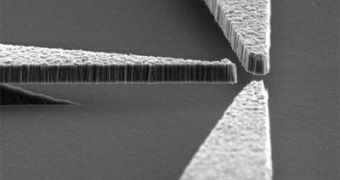Electrical engineers working at the Vanderbilt University in Nashville, Tennessee, recently announced they have created the world's first transistors and logical gates built using nano-diamond films, a breakthrough which could lead to the development of higher performing and more energy efficient computer chips.
"Diamond-based devices have the potential to operate at higher speeds and require less power than silicon-based devices," Research Professor of Electrical Engineering Jimmy Davidson said, according to Tom's Hardware.
"Diamond is the most inert material known, so our devices are largely immune to radiation damage and can operate at much higher temperatures than those made from silicon."
In addition to all the benefits brought by the new technology, Prof. Davidson was also quick to point out that devices built using this design don't have to be "exorbitantly" expensive.
This is due to the small size of the transistors manufactured, a single carat diamond being enough to create about one million such devices.
Furthermore, the diamond film required is made out of hydrogen and methane using a method called chemical vapor deposition, which is widely used in the microelectronics industry.
According to Davidson, the costs associated with making a diamond film are less than one-thousandth of the cost of regular "jewelry" diamonds.
The scientists who have developed these diamond film transistors believe the technology is well suited for being used in military electronics, circuitry that operates in space, ultra-high speed switches, ultra-low power applications and sensors that operate in high radiation environments.
No schedule for the production of these devices has been set until now, but the good news is that nanodiamond transistors and switching gates can be manufactured by processes that are already used by the semiconductor industry.
The one exception is the transistor's requirement to operate in vacuum, but a possible answer could be the metallic seals used in military-grade circuitry packaging, which “are strong enough to hold an adequate vacuum for centuries.”

 14 DAY TRIAL //
14 DAY TRIAL //